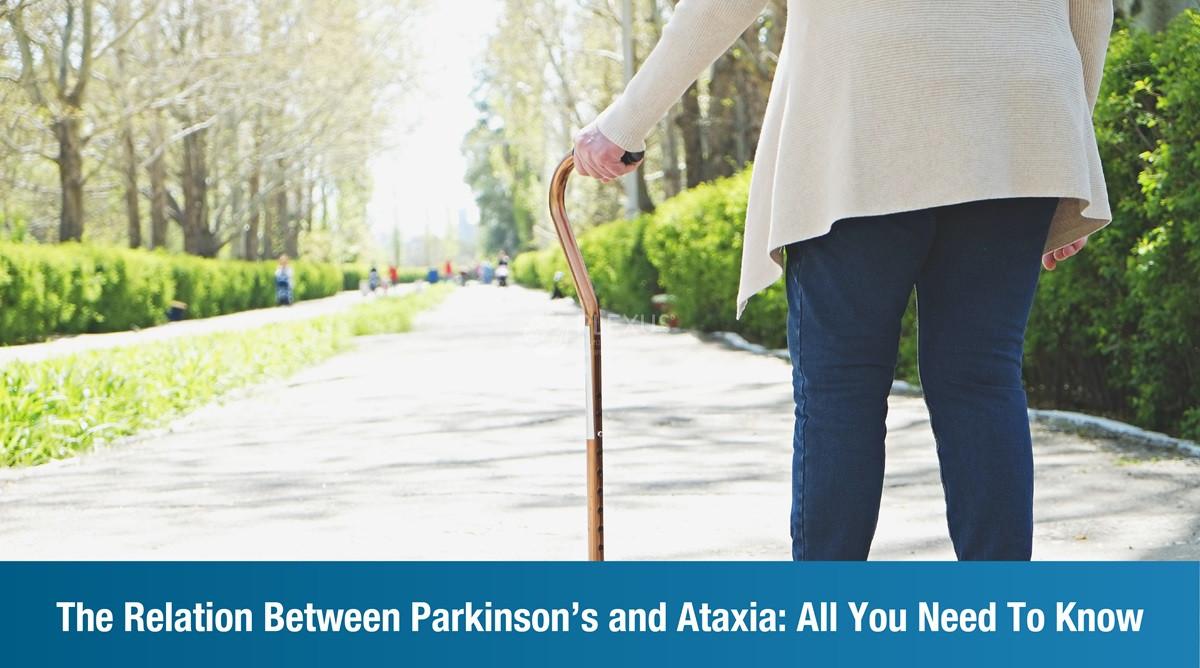
Parkinson’s Disease and Spinocerebellar Ataxia are both progressive conditions that affect movement. In both cases, patients can experience a set of symptoms that include slurred speech, trouble walking, tremors, and so on. The conditions are highly different, however, and require their own unique diagnosis and treatment approaches. Let’s take a closer look.
Understanding Parkinson’s Disease and Spinocerebellar Ataxia
Parkinson’s Disease is one of the most common neurodegenerative conditions in the world. It primarily damages the dopamine-producing neurons in a specific area of the brain called substantia nigra. Tremors are among the most common symptoms of Parkinson’s Disease, as well as slowness of movements, stiffness and stooped posture.
On the other hand, Spinocerebellar Ataxia, Spinocerebellar Atrophy, or Spinocerebellar Degeneration is a genetic disease caused by either a recessive or dominant gene. It refers to a group of ataxias that are known to be hereditary and cause harm to the cerebellum, the part of the brain which maintains balance and controls movements. Spinocerebellar Ataxia may result in non-coordinated gait, impaired hand-eye coordination, and abnormal speech. Stem cell therapy and physiotherapy are important components of both Parkinson’s Disease and Spinocerebellar Ataxia treatment.
Similarities Between Parkinson’s Disease and Ataxia
Any kind of uncoordinated movement is referred to as Ataxia. The term can also refer to a group of disorders that typically run in the family and gradually affect the brain’s ability to coordinate movement of different parts of the body.
While Ataxia may occur suddenly or over a period of time, it may be diagnosed on the basis of the below symptoms:
- Slurred speech
- Poor coordination of movement
- Inability to perform basic fine motor movements
- Dysphagia (difficulty in swallowing)
- Unsteady gait
- Propensity to trip
- Rapid back-and-forth eye movements
Let us look at the some of the most common causes of Ataxia below:
- Stroke
- Cerebral palsy
- Autoimmune diseases like multiple sclerosis, celiac disease, etc
- Vitamin deficiency (specifically Vitamins E, B-12, thiamin)
- Side effects of medication (chemotherapy, sedatives, etc)
- Alcoholism
- Genetic factors
- Viral infections like chicken pox have been known to cause Ataxia, but it typically abates with time
- Head trauma
Ataxia in Parkinson’s
Ataxia in Parkinson’s disease refers to a neurological symptom characterized by impairment in:
- Coordination
- Balance
- Muscle control
Ataxia, in fact, is one of the earliest symptoms of Parkinson’s Disease. There are also certain Parkinson’s Disease medications that could exacerbate the tremors.
It is important to note that Ataxia is not a symptom of Parkinson’s. In fact, the latter may be the cause of the former!
Treating the Two Conditions
Treatment, however, can slow disease progression and manage the symptoms. Physiotherapy, stem cell therapy, occupational therapy, and speech and language therapy are all highly beneficial for improving the patient’s independence and mobility. There are also various exercises that specifically target tremors and help to reduce their frequency.
Plexus offers customised rehabilitation programs for Parkinson’s and Spinocerebellar Ataxia at our centres in Bangalore and Hyderabad.
Spinocerebellar Ataxia Treatment in India
At Plexus, we aim to alleviate symptoms and improve the patient’s quality of life with a combination of the following:
- Physiotherapy
- Occupational Therapy
- Speech Therapy
- Stem Cell Therapy
Stem Cell Therapy for Spinocerebellar Ataxia
Injected mesenchymal stem cells (MSCs) differentiate into various cell types and possess anti-inflammatory and immunomodulatory properties, making them the ideal choice for ataxia regenerative treatment. The advantages of mesenchymal stem cell therapy at Plexus include:
- Reduces inflammation and neuroinflammation
- Promotes neuroprotection and neuronal survival
- Supports neurogenesis and neurorepair
- Minimally-invasive and painless procedure
- Autologous stem cells minimize risk immune rejection
Parkinson’s Disease Treatment in India
Our Parkinson’s rehabilitation program comprises –
- Cognitive rehabilitation therapy
- Bradykinesia management
- Rigidity management
- Agility training
- Functional training
- Hand function training and more
- Counseling and psychological support
Stem Cell Therapy for Parkinson’s
Healthy stem cells are introduced into the brain to replace damaged or lost neurons, and restore normal functioning in the brain. The procedure holds immense promise for slowing or even halting the progression of Parkinson’s disease. At Plexus, we use MSCs as part of our customized regenerative rehabilitation program for Parkinson’s. The regenerative, anti-inflammatory, and immunomodulatory properties of MSCs make them a compelling candidate for addressing the complex pathology of Parkinson’s.
If you wish to know more about our rehabilitation programs for Parkinson’s and Ataxia, reach out to our teams in Bangalore and Hyderabad today.
WhatsApp +91 89048 42087
Call +91 78159 64668 (Hyderabad) | +91 82299 99888 (Bangalore)
FAQs
How does Parkinson’s disease affect the cerebellum?
Parkinson’s disease primarily affects the basal ganglia. However, there have been cases where it has impacted the cerebellum. The cerebellum plays a crucial role in coordinating movement and balance.
What is end stage Parkinson’s?
End-stage Parkinson’s disease is characterised by significant motor and non-motor symptoms, functional impairment, and decreased quality of life. Individuals may experience severe motor fluctuations, dysphagia, dementia, immobility, and require extensive care and support.
How do you diagnose ataxia?
Ataxia is diagnosed through a comprehensive evaluation. This includes medical history, physical examination, neurological assessment, and diagnostic tests such as:
- Imaging studies (MRI or CT scans)
- Blood tests
- Genetic testing
- Electromyography (EMG)
Additionally, a detailed assessment of coordination, balance, gait, and fine motor skills is essential for diagnosing ataxia accurately.
Can people with ataxia walk again?
This depends on the underlying cause, severity of symptoms, and response to treatment. While some forms of ataxia are progressive and irreversible, others can be managed with medication, physical therapy, assistive devices, and lifestyle modifications. With timely and appropriate interventions, many people with ataxia can significantly improve their mobility.










